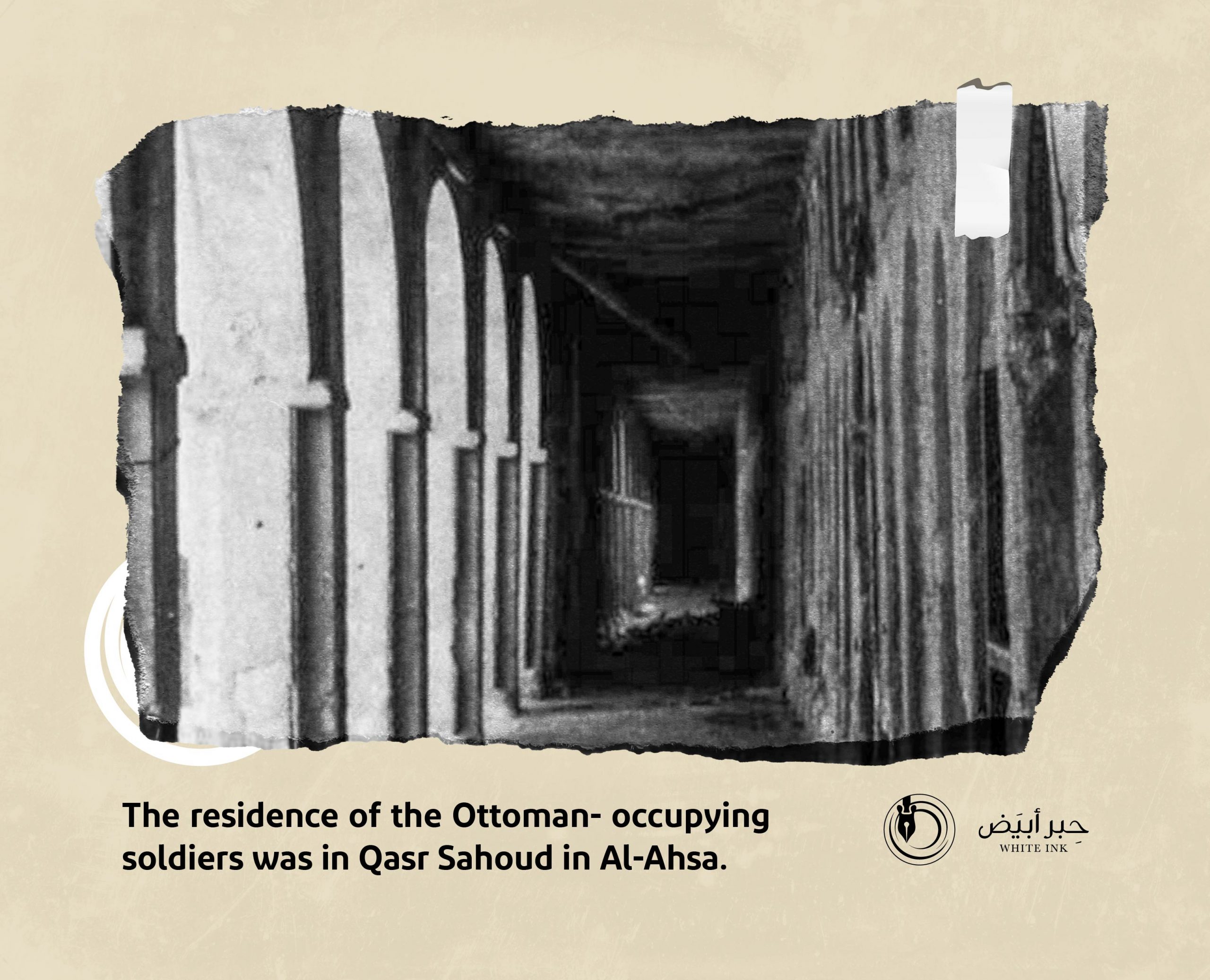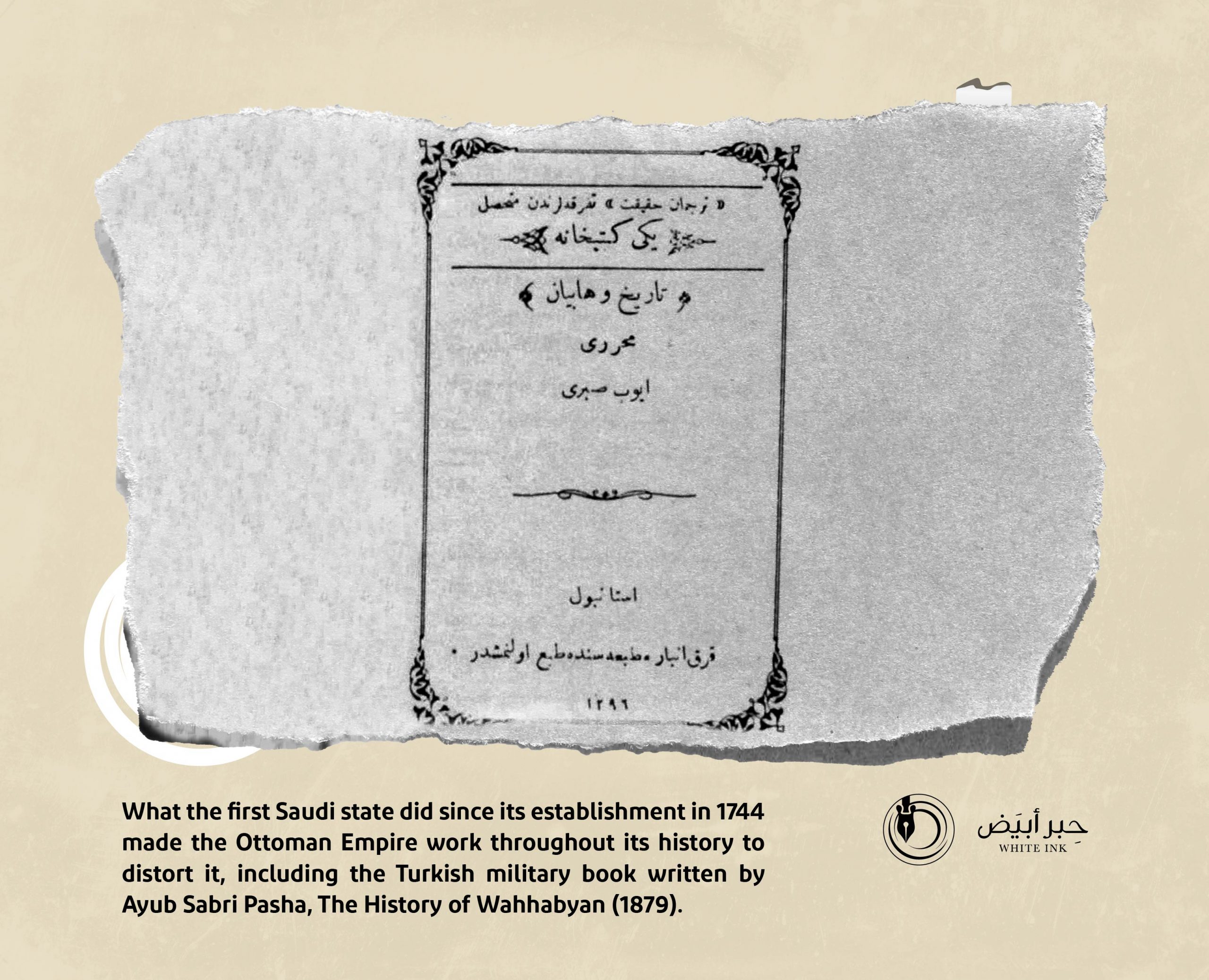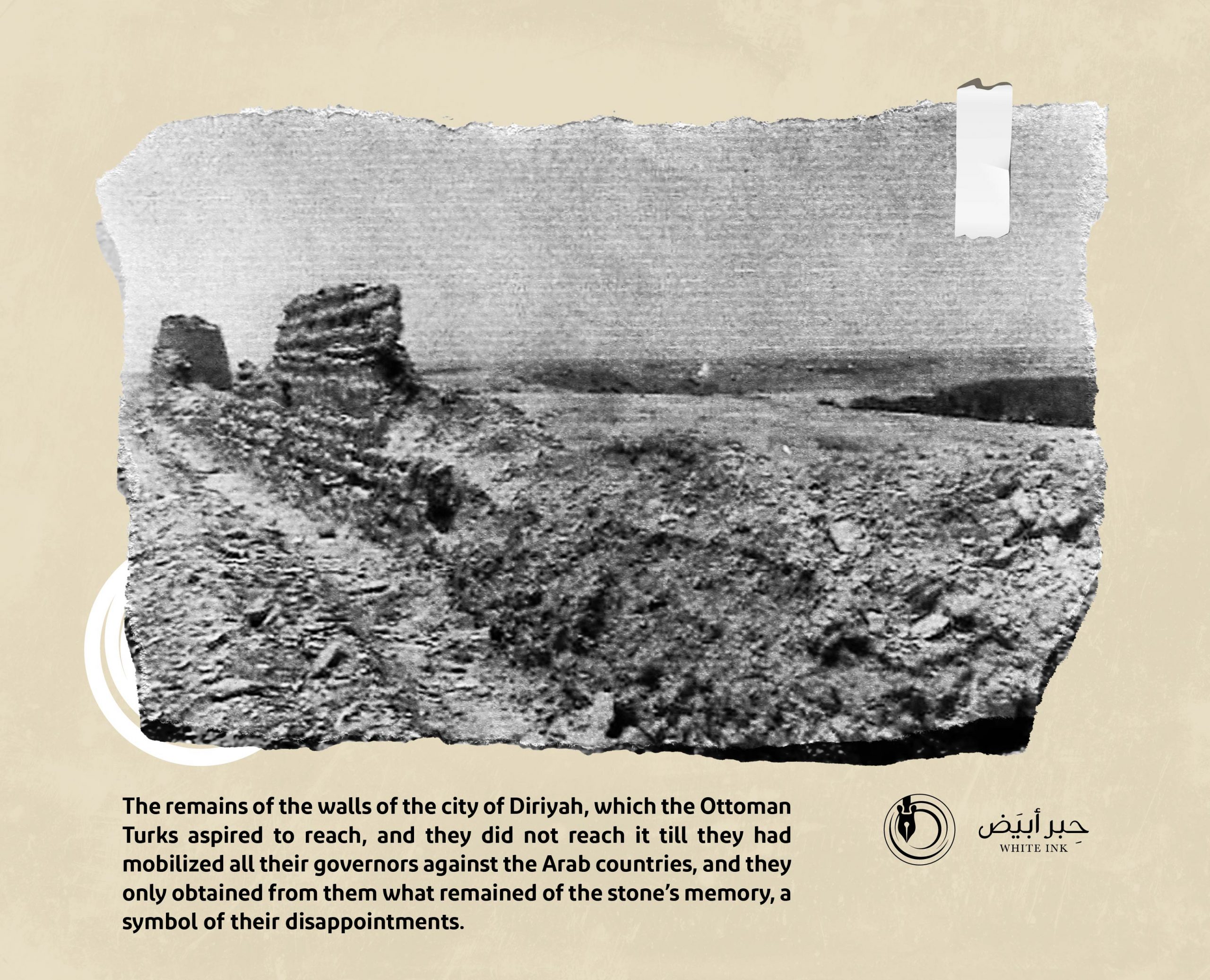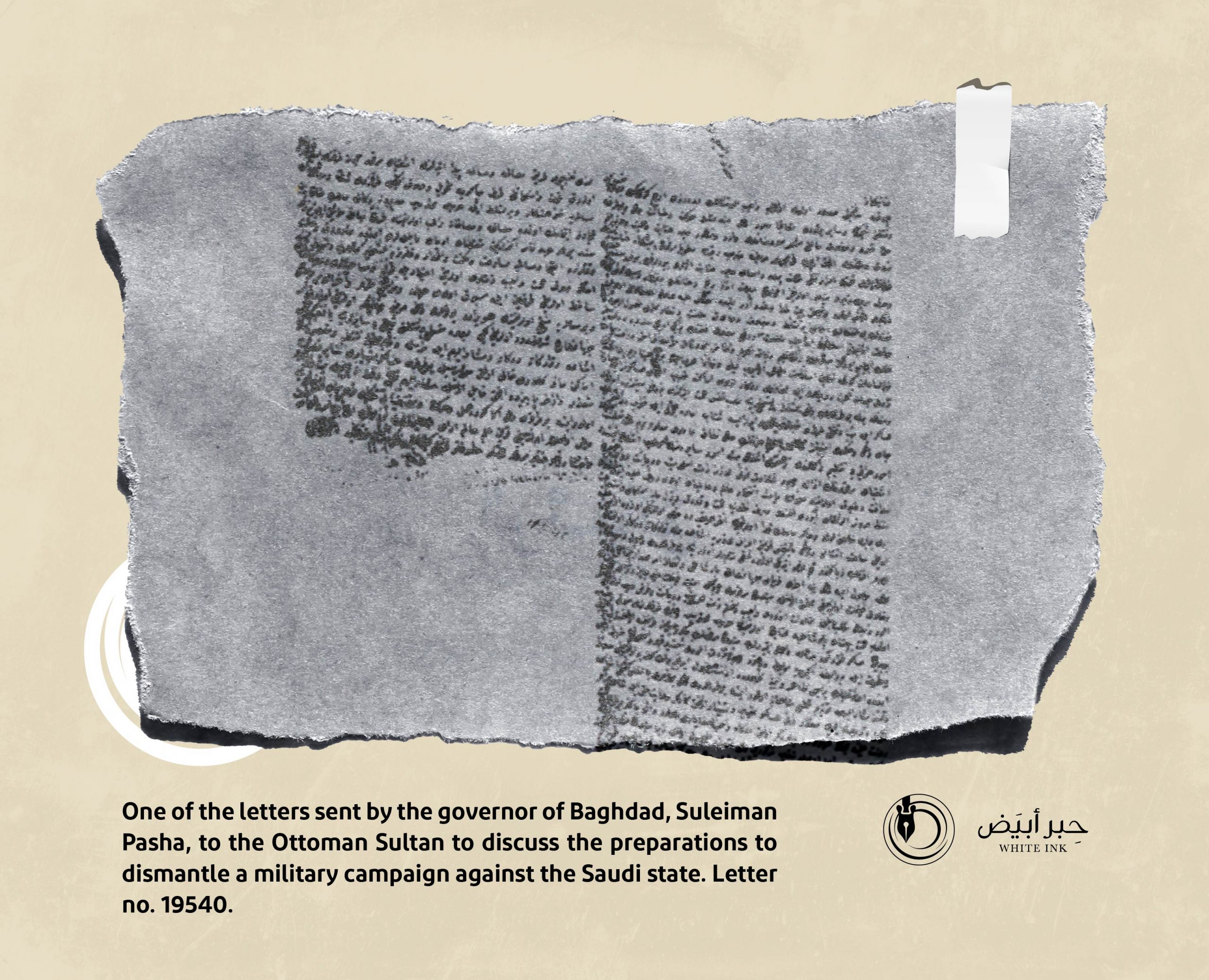
Arab unity made Mahmoud II declare state of alert
The Saudis caused the Ottomans to lose their political base used to justify their colonization of the Arab world
The emergence of the first Saudi state (1744) in the Najd region was a shocking surprise to the Ottoman Empire, which at first did not give great importance to the new state nor the whole region, before it sensed the new political power led by Imam Muhammad bin Saud (founder of the first Saudi state), which then became a serious threat due to the pure religious vocation as ground to its political existence; as it broke big in the Arabian Peninsula.
The influence of the first Saudi state expanded within a short period in the Arabian Peninsula, and worked to unify its geographical outskirts, and sought to recover the Two Holy Mosques from Ottoman control to its legitimate Arab incubator, based on the first geographical unity of the Arabian Peninsula, and the innate Arab refusal to submit to the colonial authority regardless of its various names, which raised the fears of the Ottoman governors in Hijaz; accordingly, their governor of Makkah, Masoud bin Said, sent a petition to Istanbul (1749) warning of what he described as “the jurisprudence of Sheikh Muhammad bin Abdul Wahhab”, a warning to which the Ottoman Sultan Mahmud I (1730-1754) responded with a cross-petition, asking the governor of the province of Habash, the Mutasarrif of Jeddah, and the Sheikh of the Grand Mosque in Makkah, Othman Pasha, to work actively with the governor of Makkah in this regard.
Confronted with this new political reality imposed by the Saudis, the Sultan of the Ottoman Empire sensed the gravity of the situation, which prompted him to describe Sheikh Muhammad bin Abd al-Wahhab as an “atheist” and to accuse the Saudi state of deviating the “caliphate” despite all the signs confirming the absence of any aspect of any political sovereignty over the region for nearly three centuries, and all tasks related to matters of state, judiciary, and hisbah, in which the Ottoman state had no power, not to mention excluding an ethnic dynasty from being an invader that did not meet the conditions of the Islamic caliphate, either legally or actually.
All signs confirmed the absence of any aspect of political sovereignty over the Arabian Peninsula during the Ottoman occupation for three centuries.

The Ottomans dealt with the situation according to their supremacist nature, which was reflected in the reply message sent by the Topkapı Palace to the Emir of Makkah, which stated in one of the paragraphs therein: “…due to the fact that (the atheist) was able to win over the inhabitants of those regions to his side with all tricks… The inaction regarding this person, will cause the need to arise for more forces.
Further to the Ottomans’ stance regarding the warnings of their governor regarding the Saudis and the establishment of their first state; A group of researchers believe that the conflict between the Saudis and the Ottomans was objective, due to the nature of the creedal dispute between a Salafist state of pure belief and an exaggerated Sufi state, which formed the pillars upon which each political entity was based. This is the doctrinal contradiction that the researcher and media person Sultan al-Asqa describes by saying: “One of the natures of the exaggerated mystic whose belif is corrupted that he fights those who call for monotheism and those who revive the belief of Ahlu Sunnah Wal Jama’a… It is the nature of things that the Ottoman Empire and its mystical sultans fight it.
Initially, the Ottomans saw that confronting the first Saudi state requires legitimate justifications accepted by the Arabs who were adjacent to the new borders of the Saudi state; the Ottomans found no justification but “deviation” in order to sanctuaries this war. Rather, it was even filled with hatred towards the inhabitants of Najd by preventing them from performing the Hajj rituals under the justification that they are “Wahhabi Kharijites,” and they imprisoned and abused them in a scene described by the historian Othman bin Bishr, in his book “Glory title in history of Najd” about the events of (1749): “during which, Masoud bin Said, the Sharif of Makkah, the pilgrim of Najd was imprisoned, and several of them died in detention.”
The Ottoman Empire’s hatred towards the inhabitants of Najd reached the point of preventing them from performing the rites of Hajj.

The Two Holy Mosques are the center of gravity of both Arab and Islamic world, so the threat of taking them back by the first Saudi state, caused the Ottomans to lose their religious base on which they established the legitimacy of their political colonialism. This fact explains the operational status declared by the Ottoman Sultan to stop the expansion of the Saudi state, which was looking forward to gathering the Arabs of the island under one Arab leadership, in light of the Ottoman Sultanate’s lack of the legal pillars of leading the Islamic nation, and also in light of the ethnic policy pursued by Istanbul towards Hijaz, which was nothing but the “legitimacy instrument” on which it rests in the process of subjugating the rest of the Islamic societies under the justifications for the invasion at times, and for conquest at other times, which would not have been possible without the strong religious symbolism of the sacred feelings.
In conformation of this new geostrategic reality, the Ottoman Sultan prompted some of his governors to seek the first Saudi state’s destruction in its infancy, by directing a series of campaigns that were unsuccessful due to the strength of the Saudi armies, which were armed with a pure belief stemming from the spirit of the Islamic religion and guided by its Sharia to shape a heroic epic in defense of religion, honor and homeland, and it managed to repel the Ottoman danger, even for the time being.


- Hussein bin Ghannam, Kindergarten ideas and understandings of the Imam and walked through the event of census invasions with Islam (Riyadh: Dar Al-Tholothia, 2010).
- Othman bin Bishr, Title of glory in the history of Najd, achieved by: Abdul Rahman Al Sheikh, 4th ed (Riyadh: Ministry of Education, 1971).
- Abdul rahman Aljabart, Date of Jabarti named the wonders of monuments in biographies and news, achieved by: Abd al-Rahman Abd al-Rahman (Cairo: Egyptian National Library, 1997).
- Abd al-Rahim Abd al-Rahman, The First Saudi State, 5th ed (Cairo: University book house, 1987).
- Salih Al-Saadoun, “The Prohibition of Hajj between the Ottoman Empire and the First Saudi State, Riyadh: Al-Darah Journal, No. 2, Volume: 35 (2009).
- 6- Dr. Sultan Al-Asqa, episodes of the “Al-Asmali” Program.
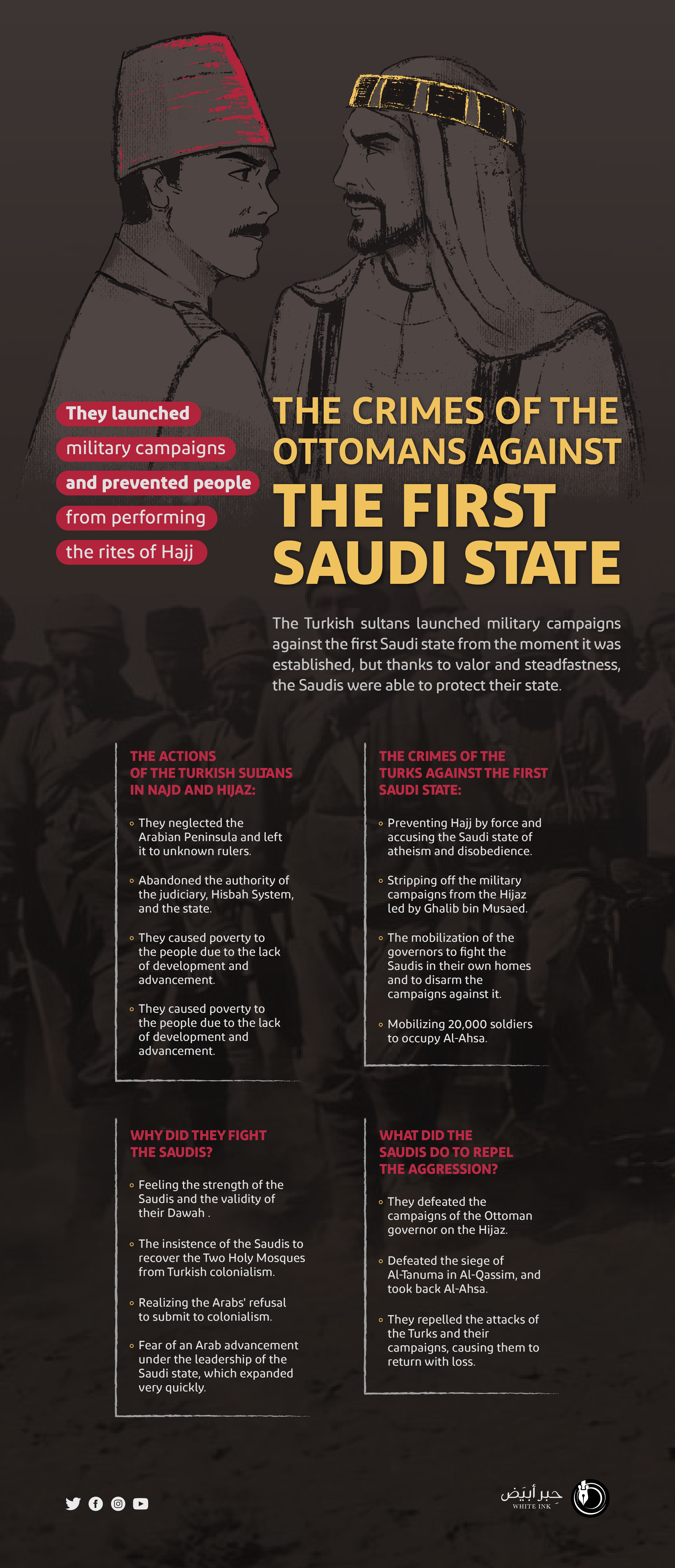

Saudis delivered the proof of the Turkish Empire weakness, fragility, corrupted belief, and the groundless authority on the Islamic World
The bond of the Ottomans with the Arabian Peninsula began after their occupation of Egypt in 1517, right after the Mamluk state fell and the Sharif Barakat bin Muhammad bin Barakat, or Barakat II, recognized the new Ottoman sovereignty, after a campaign of terror and messages of intimidation sent by Selim I if he does not declare his allegiance, and threatening to invade Hijaz. For three centuries, The Ottomans continued to colonize by imposing their authority on vital parts of the Arabian Peninsula only, in Hijaz, Yemen and Al-Ahsa, especially in Hijaz, where the Sharifs continued to rule autonomously under the name of the Ottomans, until the period of the Sharifs power struggle. What was the Ottomans stance towards the families of the Sharifs who were part of the power struggle?
The Ottomans dismissed those who they wanted to remove from the Sharifs, through the governor of the Levant, as the latter takes advantage of the short period during which the pilgrims remained in Makkah and dismisses the Sharif who is required to be removed, and appoints someone else, as he was also appointing one of the Ottoman pashas over Jeddah. The Sharifs competing on the Sharifate of Makkah are encouraged by the governors of the Sultan in the adjacent provinces; During the eighteenth century, the affairs of Makkah were intervened by the rulers of Egypt, the Levant, and Yemen, where the influence and interests of all these clashed.
In his book “The Ottoman State and the Arabian Peninsula,” the Egyptian historian, Mr. Rajab Haraz, tells us an important fact in the bond of the Ottoman Empire with the heartland of the Arabian Peninsula: “The Ottoman State, at its glare of glory, its hand did not reach to some sheikhdoms or emirates of the Arabian Gulf or the Gulf of Oman, and it did not have effective control over the heartland of the Arabian Peninsula.”. However, the Ottomans continued to claim the rights of sovereignty over the entire peninsula or what is known as the Arab region, which is bounded by the Fertile Crescent from the northeast and northwest, then the Red Sea to the west, the Gulf of Aden, the Arabian Sea and the Indian Ocean to the south, and then the Gulf of Oman to the southeast. and the Arabian Gulf to the east.
Rajab Haraz: "The Ottoman Empire, at its flare of glory, failed to have its hand reach to some sheikhdoms or emirates of the Arabian Gulf or the Gulf of Oman, and it did not have effective control over the heartland of the Arabian Peninsula."

This led to attempts by the Sharifs of Makkah, who recognize Ottoman sovereignty, to invade Najd several times, and their conquest began in (1578), then they tried to invade it again three years later. During the seventeenth century, the Sharifs invaded Najd five times in the years (1606, 1647, 1669, 1676, 1697).
The weakness of the Ottoman Empire in the eighteenth century as a result of its successive external defeats, multiple revolutions in Yemen and its departure from Ottoman sovereignty, further to the Ottomans’ withdrawal from the eastern seas, allowed the Sharifs of Hijaz to grow powers and the Ottomans to count on them in running the affairs of the Arabian Peninsula; as the Sharif of Makkah assumes his position from the sultan, recognizes the judge appointed by the sultan, and is proud of being the servant of the Empire and the sultan.
With the establishment of the first Saudi state in the heartland of the Arabian Peninsula in 1744, a direct clash took place between the Sharifs of Makkah, affiliated with the Ottoman Empire and the Saudis. This issue reached its peak during the reign of the governor of Makkah, Ghalib bin Musaed, who doubted the submission of the Emirate of Diriyah to Islam, and obtained a fatwa from some scholars in Makkah that it is permissible to fight the Saudi state and eliminate its call; this is what Ghalib wished to prepare a military campaign to attack the first Saudi state. A campaign consisted of thousands of soldiers, came out in (1790) against the Saudis, led by Abdul Aziz bin Musaed. Certainly, Ghalib justified this campaign that the Saudis were Kharijites against the Ottoman Sultan, therefore they must be fought.
The campaign marched to Najd to invade it, and confrontations took place in several areas, such as Al-Bassam Palace in the “Al-Sir” area, and Ghalib personally joined the campaign after that, so that the Ottoman Sultan rest assured of the success of the campaign in eliminating the state, and the battles were renewed again in “al shoaraa” and “al baroud”. However, the Saudi army was able to defeat Ghalib’s army in the battle of Al-Adwa. Subsequently, all attempts by Ghalib bin Mosaed to do it again failed.
It is said that Ghalib bin Musaed managed to get some scholars of Makkah and Madinah to write letters of invocation to the Ottoman Sultan, for the direct intervention of the Ottomans against the Saudis, as they were Kharijites against the Ottoman Empire. Ghalib also took advantage of the opportunity of the pilgrimage of the governor of Acre, Ahmad Pasha al-Jazzar, and complained to him about the situation of the Saudis and the impact of their call on the position of the Ottomans in Hijaz.
Ghalib bin Musaed attacked Najd again, but the Saudis were able to fight back, Imam Saud bin Abdul Aziz was even able to counter-strike him in his own state. From this point on, the Saudis’ victories against the Ottoman governors in Hijaz began with the annexation of Taif until the recovery of Makkah, the Prophet’s city and the rest of Hijaz from the grip of the Ottomans and their colonization until the Ottomans cried out to their rulers until Muhammad Ali Pasha moved to Egypt after several temptations to prepare a military campaign against the Saudi state, which began preparation for a year ago (1809 AD).
The Ottomans prompted their governors and supported the inter-Arab wars in the Arabian Peninsula.



- Othman bin Bishr, Title of glory in the history of Najd, achieved by: Abdul Rahman Al Sheikh, 4th ed (Riyadh: Ministry of Education, 1971).
- Abdul rahman Aljabart, Date of Jabarti named the wonders of monuments in biographies and news, achieved by: Abd al-Rahman Abd al-Rahman (Cairo: Egyptian National Library, 1997).
- Abd al-Rahim Abd al-Rahman, The First Saudi State, 5th ed (Cairo: University book house, 1987).
- Al-Sayed Rajab Haraz, The Ottoman Empire and the peninsula of the Arabs (Cairo: Institute of Arab Research & Studies, 1970).

The Ottoman Empire embarrassed its ruler over Iraq by insisting on repeating its failure in confronting the Saudis
The rise of the first Saudi state in the Arabian Peninsula since the late thirteenth century AD and its expansion in its various regions constituted a political, cultural and civilizational renaissance that extended to its external borders. This, in turn, was reflected in the emergence and formation of a strong politically and militarily state.
The Ottoman Empire was suspicious of all the events and political developments in the Arabian Peninsula. The Ottomans realized the danger that the first Saudi state posed to their colonies in the Arabian Peninsula, its geographical borders, and its colonial influence in the region.
The Turks saw in the expansion of the first Saudi state, its development and religious renaissance in its Arab lands in the Najd region, a boldness and impetus that is unacceptable from the Turkish point of view. They saw that their expansion in eastern Arabia and their annexation of Al-Ahsa (1795) and their threat to Iraq constituted a threat to their strategic and economic interests, and similarly after their annexation of the Hijaz (1805). The Hijaz formed an aura of influence and religious prestige for the Ottoman state, so its reversion by the first Saudi state was a severe blow to that false influence and an end to the artificial Ottoman prestige in the Islamic world.
Early on, the Ottomans realized the threat posed by the first Saudi state on their interests in the Arabian Peninsula.

Therefore, the Ottoman Sultan Mahmoud I issued a royal firman to conduct military campaigns to eliminate the first Saudi state, limit its activity and expansion, and not to be lenient in dealing with it. This was represented by assigning the governor of Baghdad, Suleiman Pasha, to carry out this task. If we take into account the date of the military campaign (1786), we will find that it was at a relatively early period in the beginning of the campaigns directed at targeting the emerging first Saudi state. Suleiman Pasha, in turn, commissioned Thuwaini bin Abdullah Al Shabib, head of Al-Muntafiq, to prepare and lead the military campaign directed against the Saudis, which the historian Ibn Bishr describes by saying: “In Muharram, Thuwaini bin Abdullah bin Muhammad Al Shabib marched with the soldiers, and he had incalculable equipment and armament, so much so that the loads of guns and cannons and their machines amounted to seven hundred loads”.
The Iraqi historian Othman bin Sanad Al-Basri, a contemporary of the events, also confirmed that campaign by saying: “He marched in battalions like mountains and processions in which blades shine”. He headed with those large forces with the intention of attacking the capital of the Saudi state “Diriyah”. He started with Al-Qassim and attacked its towns with his large army, besieging them for days and pounding them with cannons. He did not succeed in entering the smallest of its towns, “Al-Tanuma”, north of Al-Asyah, which showed great resistance and great steadfastness from its people in the face of the campaign. However, nothing but steadfastness helped, except that Thuwaini was able to deceive the people of the town with safety, but he did not fulfill his promise with them, so he took control over the town, plundered it and killed all its people except the homeless.
The sources indicate that the number of dead reached about one hundred and seventy men, then the military campaign headed to the city of Buraidah. He fought its people and surrounded it with his soldiers, but he retreated after a dispute occurred in his homeland over the leadership of the tribe, as his cousin turned against him and he was forced to retreat with his army.
Despite the failure of that military campaign, the Ottoman Empire did not despair of re-asking the governor of Baghdad, Suleiman Pasha, to attack the Saudi capital. However, the aforementioned governor began to fabricate many reasons for his inability to conduct a military campaign against the Saudi state. One of those reasons was that his forces could not fight the Saudis in remote desert areas or in unknown land and harsh climatic conditions, and the army included various elements of Arabs and Kurds, and that doing such a thing would have unknown consequences. However, the Ottoman Sultan’s insistence more than once on the governor Suleiman Pasha to prepare a military campaign to fight Al-Diriyah and occupy Al-Ahsa after the Saudis recovered it, made the governor Suleiman Pasha finally respond to the Sultan’s orders. He prepared two campaigns to occupy Al-Ahsa. In 1797, he commissioned Thuwaini bin Abdullah again to prepare a military campaign to confront the Saudis, attack Diriyah, and occupy Al-Ahsa.
Thuwaini carried out the order of Suleiman Pasha and began to mobilize the crowds for the campaign against the Saudis, making Al-Jahra a center for that campaign, and he continued to mobilize his forces there for three months, during which tribes, clans and government soldiers joined him. The campaign moved through land and sea towards Qatif, but the factors of failure were going with it, as there was a great discrepancy in its elements, especially between the tribal leaders. Thuwaini was close to some of them and ignored the others. Therefore, the result was that Thuwaini was betrayed and killed on the battlefield. This assassination was enough to disrupt the campaign. In the end, the campaign failed and had to go back to where it came from.
Military campaigns continued from the side of Iraq at that time, in implementation of Istanbul’s orders. The governor of Baghdad, Suleiman Pasha, received other strict orders from the Ottoman Sultan to march to the Arabian Peninsula to strike and eliminate the Saudis. In 1798, he prepared a large campaign led by his deputy, Ali Al-Kikhia, and supported him with various weapons and equipment. The campaign included various regular military forces in addition to the Kurdish and Arab tribal forces.
The Iraqi historian Yassin al-Omari estimated that these forces amounted to about twenty thousand fighters. The British Resident in Baghdad “Harvard Johns” also watched the great preparations for the campaign that were camping outside the walls of Baghdad on the western shore of the Tigris River. After Ali Al-Kikhia completed his preparations, he left Baghdad with his large army, heading towards Basra. The campaign proceeded until it reached Basra, and there it was divided into two parts. The first part included the knights and clan forces, headed by the leader of the Iraqi campaign “Ali Al-Kikhia”, and they headed towards Al-Ahsa by land. As for the other part, it includes infantry, artillery and heavy munitions teams, where the aforementioned commander rented some of the ships that sailed towards Uqair port on Al-Ahsa shore.
The Iraqi campaign is considered the first Ottoman attempt to eliminate the first Saudi state.

The military campaign, with its land and sea divisions, continued until it entered Al-Ahsa after much suffering and trouble. As soon as Al-Kikhia approached Al-Ahsa, the campaign attacked the Saudi forts and imposed a siege on them for a period of three months. However, the Saudi garrisons were able to vigorously confront the violent campaign attacks. This confrontation had a bad impact on the psyche of the soldiers of the campaign, as the historian Rasoul Al-Karkawli refers to this by saying: “Government forces were camping in the desert, which had no vegetation. As a result, camels were emaciated and unable to carry weights. Nearly nine thousand camels perished, ammunition and equipment dwindled. The soldiers were thinking about their fate and the doom that awaited them, and they went to their commanders urging them to hurry back because there was no point in staying there. The Iraqi campaign returned from Al-Ahsa after several months without achieving any victory or any significant goal, and its only result was a truce and reconciliation between the governors of Baghdad and the first Saudi state.


- Document No: (BOA.H.H. No, 6701), Archives of the Presidency of the Council of Ministers, Istanbul.
- Othman bin Bishr, Title of Glory in the History of Najd, Investigated by: Abdul Rahman Al Sheikh, 4th Edition (Riyadh: Ministry of Education, 1971).
- Bridges, A Brief History of Wahhabism, translated by: Owaidah Al-Juhani (Riyadh: King Abdulaziz Foundation, 2005).
- Rasoul Al-Karkawli, Dawhat alwuzara’ fi tarikh waqaie baghdad Alzawra, translated by: Musa Kazem Nawras (Beirut: Dar Al-Kitab Al-Arabi, 1963).
- Yassin bin Khair Allah Al-Omari, Al-Durr Al-Maknoun fi Alma’thir Almadia min Alqurun, British Museum Copy, London, No: (IOR. Add. 123312).
- Othman Bin Sanad, Readings of Al-Saud with the good news of Governor Daoud, investigated by: Imad Abdel Salam and Suhaila Al-Qaisi (Mosul: Dar Al-Hikma, 1991).
- Abdul Rahim Abdul Rahman, The First Saudi State, 5th Edition (Cairo: University Book Centre, 1987).


